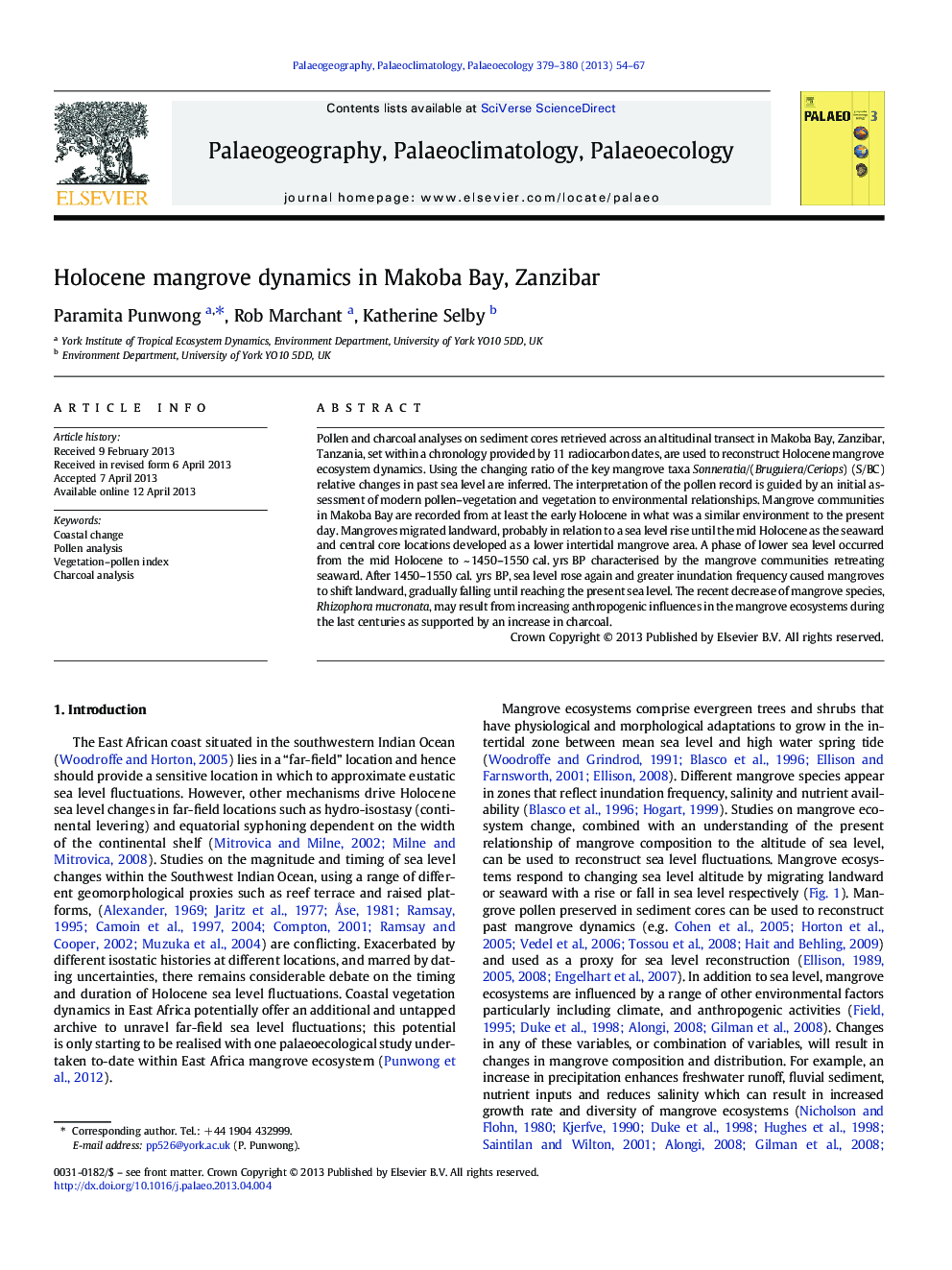| Article ID | Journal | Published Year | Pages | File Type |
|---|---|---|---|---|
| 4466522 | Palaeogeography, Palaeoclimatology, Palaeoecology | 2013 | 14 Pages |
Highlight•Mangrove pollen provides a reliable means of reconstructing past environments.•Mangrove dynamics from Zanzibar are reconstructed to interpret sea level changes.•Makoba underwent a Mid Holocene sea level rise causing shoreline to retreat landward.•Sea level fell from a late Holocene to the present day.•Human activities also impact on mangrove ecosystems in the historical period.
Pollen and charcoal analyses on sediment cores retrieved across an altitudinal transect in Makoba Bay, Zanzibar, Tanzania, set within a chronology provided by 11 radiocarbon dates, are used to reconstruct Holocene mangrove ecosystem dynamics. Using the changing ratio of the key mangrove taxa Sonneratia/(Bruguiera/Ceriops) (S/BC) relative changes in past sea level are inferred. The interpretation of the pollen record is guided by an initial assessment of modern pollen–vegetation and vegetation to environmental relationships. Mangrove communities in Makoba Bay are recorded from at least the early Holocene in what was a similar environment to the present day. Mangroves migrated landward, probably in relation to a sea level rise until the mid Holocene as the seaward and central core locations developed as a lower intertidal mangrove area. A phase of lower sea level occurred from the mid Holocene to ~ 1450–1550 cal. yrs BP characterised by the mangrove communities retreating seaward. After 1450–1550 cal. yrs BP, sea level rose again and greater inundation frequency caused mangroves to shift landward, gradually falling until reaching the present sea level. The recent decrease of mangrove species, Rhizophora mucronata, may result from increasing anthropogenic influences in the mangrove ecosystems during the last centuries as supported by an increase in charcoal.
